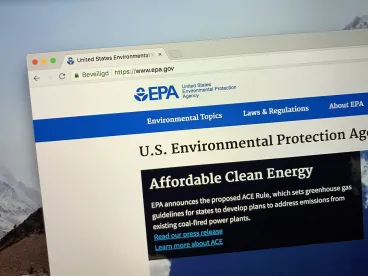Inside EPA reports that EPA has been looking at "techniques and procedures" to apply CERCLA, also known as the Superfund statute, differently to "folks who are not responsible for causing" PFAS releases even though those "folks" would be liable under the statute for such releases once those PFAS are "hazardous substances."
Making at least certain PFAS "hazardous substances" is one of the first milestones on EPA's PFAS road map published last year.
This report is notable for at least two reasons.
First, the entire premise of CERCLA is that any "person" specified in section 107(a) of the statute is liable for the cost of, among other things, responding to releases of hazardous substances and damages for injury to natural resources. Whether or not "folks" are "responsible for causing those releases" has always been pretty much irrelevant to EPA and of limited practical relevance to everyone else.
EPA will be hard pressed to explain how treating PFAS differently is consistent with this section of the statute.
Second, the "kind of people" EPA says it is not "looking at" to bear responsibility for PFAS releases are already bearing that responsibility under state statutes and regulations that already apply to PFAS around the country. And even if EPA sees them differently, that doesn't mean that anyone else who might commence a lawsuit under CERCLA would see things the same way. It seems as if EPA thinks we should be concerned about that. I agree.
There are no easy answers to the PFAS questions EPA is being asked and attempting in good faith to answer. PFAS are called "forever chemicals" for a reason but we're coming to learn they could also easily be called " pretty much everywhere chemicals." What to do about the PFAS already in the environment, and the continuing uses of PFAS that guarantee future releases, and who should pay for those things, is going to take some time to figure out. Carefully making a science-based decision about which of those PFAS should be "hazardous substances" to begin with is a necessary first step.
Waterhouse -- the deputy assistant administrator of the Office of Land and Emergency Management (OLEM) who has been nominated to lead the office -- said OLEM has been having “close conversations” with agency enforcement officials since the start of the proposed rule’s development to determine if there are “techniques and procedures” that could be used to limit actions the agency may take against “folks who are not responsible for causing” PFAS releases. “These are not the kind of people we are looking at,” he said.




 />i
/>i

